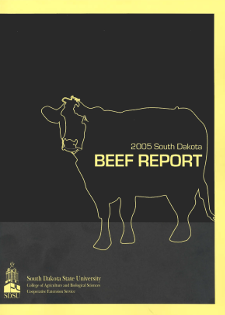Title
Relative Efficiency of Natural Feeding Programs Using Germ or Bran Cake from a Dry Milling Process
Document Type
Report
Report Number
2005-16
Publication Date
2005
Keywords
natural feeding, bran cake, dry milling process, ionophore diets
Summary
This experiment was designed to evaluate the potential of using high-fat ethanol co-products in cattle feeding programs that exclude implants and ionophores. Four treatments included: 1) Positive Control, implanted steers fed a typical diet that included 29g/T monensin; 2) Control Diet fed to non-implanted steers; 3) 14% Germ, no implant or ionophore; and 4) 30% Bran Cake, no implant, no ionophore. After a 110 d finishing period, the breakeven (B/E) fed cattle price increased $3.04/cwt when an implant was not used on the Control diet. The Germ diet resulted in comparable performance as the Control diet fed to non-implanted steers. The Bran Cake diet resulted in lower (P < 0.05) ADG and higher (P < 0.05) feed/gain than the Control diet (2) although DMI were similar. Most of the performance loss associated with the Bran Cake diet occurred late in the feeding period. The substitution of bran for corn results in an apparent lower dietary NE value. A substantial reduction in feed price would be necessary for this Bran Cake diet to be a cost effective means of producing antibiotic-free beef. There was no evidence of bloat or digestive disorder in the higher fat-no ionophore diets.
Number of Pages
4
Format
application/pdf
Language
en
Publisher
South Dakota State University
Rights
Copyright © 2005 South Dakota State University
Recommended Citation
Pritchard, Robbi H. and Boggs, Donald L., "Relative Efficiency of Natural Feeding Programs Using Germ or Bran Cake from a Dry Milling Process" (2005). South Dakota Beef Report, 2005. 17.
https://openprairie.sdstate.edu/sd_beefreport_2005/17


